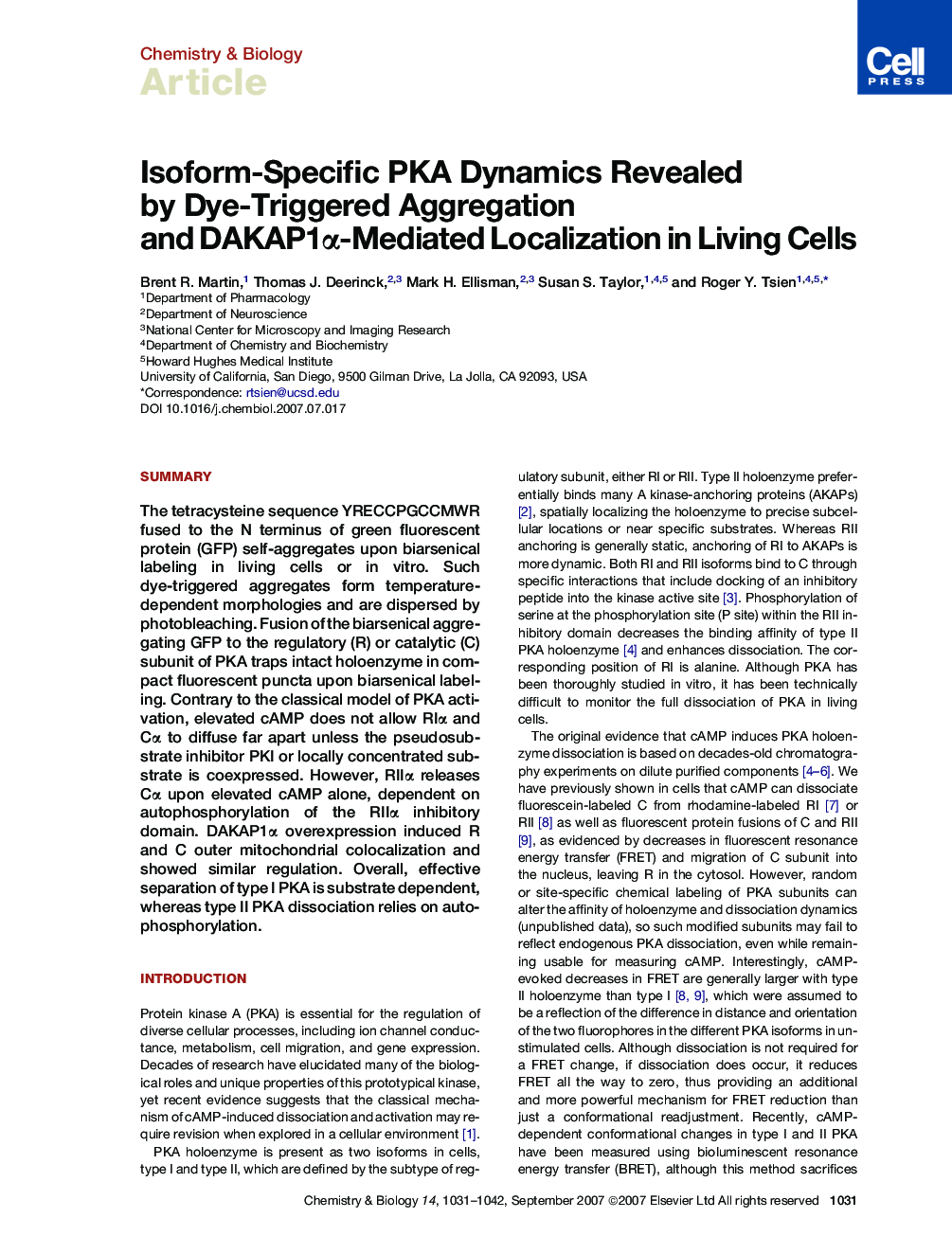| کد مقاله | کد نشریه | سال انتشار | مقاله انگلیسی | نسخه تمام متن |
|---|---|---|---|---|
| 1391703 | 983625 | 2007 | 12 صفحه PDF | دانلود رایگان |

SummaryThe tetracysteine sequence YRECCPGCCMWR fused to the N terminus of green fluorescent protein (GFP) self-aggregates upon biarsenical labeling in living cells or in vitro. Such dye-triggered aggregates form temperature-dependent morphologies and are dispersed by photobleaching. Fusion of the biarsenical aggregating GFP to the regulatory (R) or catalytic (C) subunit of PKA traps intact holoenzyme in compact fluorescent puncta upon biarsenical labeling. Contrary to the classical model of PKA activation, elevated cAMP does not allow RIα and Cα to diffuse far apart unless the pseudosubstrate inhibitor PKI or locally concentrated substrate is coexpressed. However, RIIα releases Cα upon elevated cAMP alone, dependent on autophosphorylation of the RIIα inhibitory domain. DAKAP1α overexpression induced R and C outer mitochondrial colocalization and showed similar regulation. Overall, effective separation of type I PKA is substrate dependent, whereas type II PKA dissociation relies on autophosphorylation.
Journal: - Volume 14, Issue 9, 21 September 2007, Pages 1031–1042